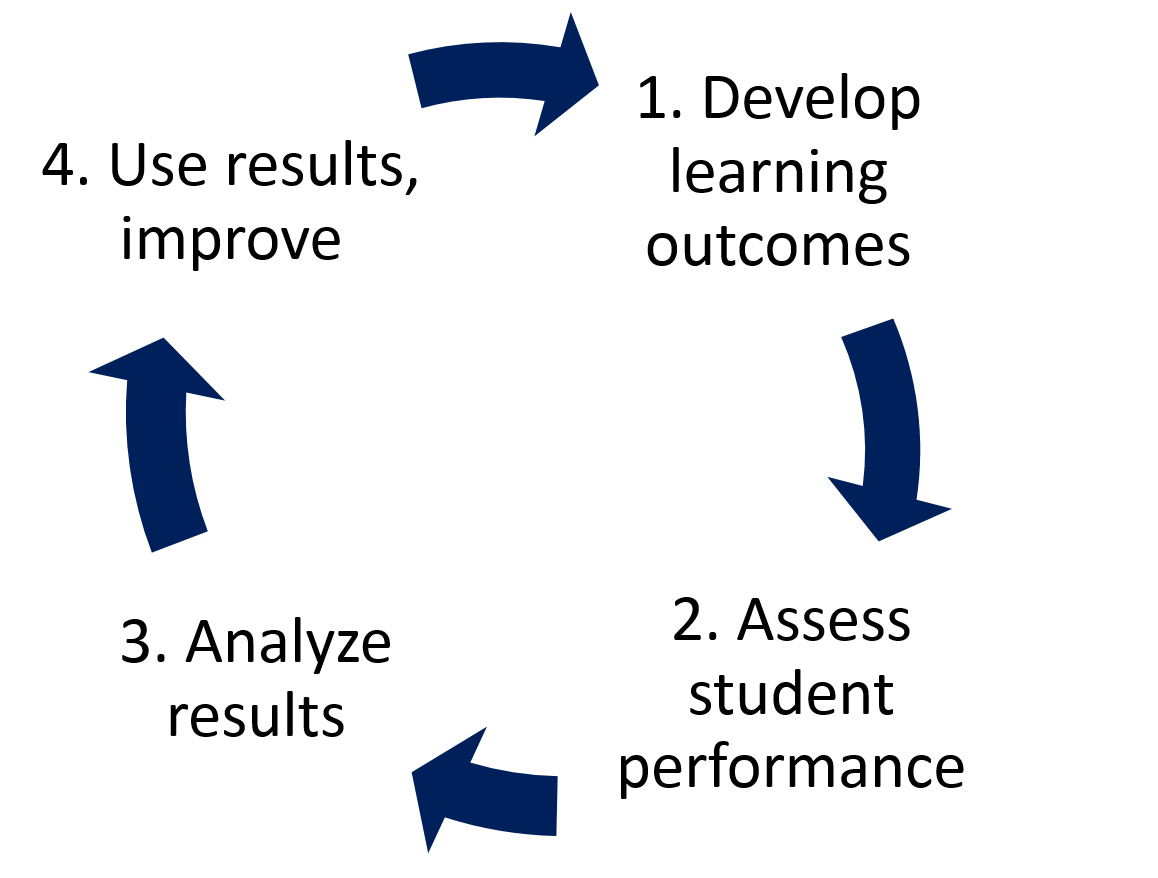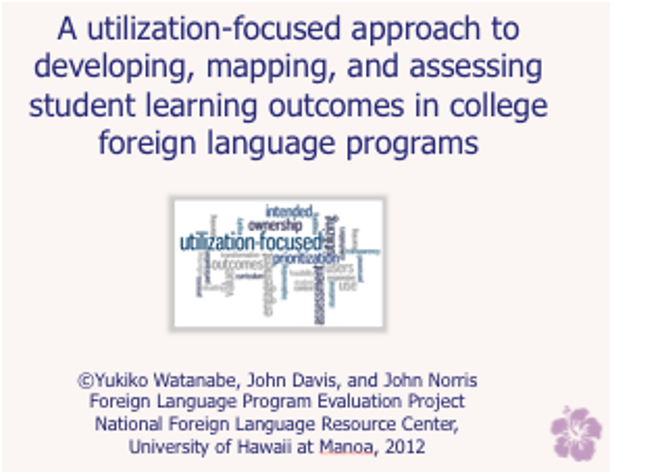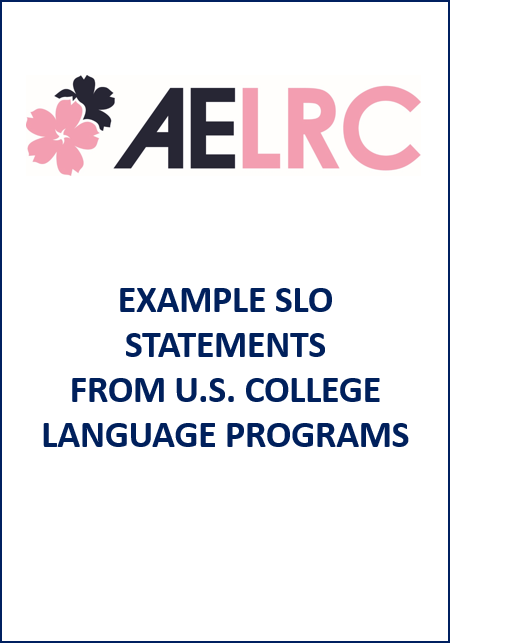SLO Assessment

Student learning outcome (SLO) assessment refers to the use of information about student learning to better understand and help improve language teaching, materials, or curricula. Typically, this process (see figure) is required by college administrations to meet accreditation requirements and involves (a) stating student learning outcomes (i.e, knowledge, skills, and dispositions); (b) collecting information on student achievement; and (c) using that information toward improvement of educational delivery.
The resources below aim to help language educators engage in SLO assessment in productively useful ways that impact learning and teaching for the better.
Featured Resource

A utilization-focused approach to developing, mapping, and assessing student learning outcomes in college foreign language programs
Yukiko Watanabe, John McE. Davis, and John Norris
A set of practical, hands-on assessment modules designed to help language educators plan, implement, and use SLO assessment in tertiary foreign language programs. The module is a step-by-step guide for developing a feasible, useful assessment plan that will help ensure assessment findings are used productively toward program understanding, decision-making, and educational improvement.
- Introduction: About the module (Read this first)
- Module 1: Understanding utilization-focused outcomes assessment
- Module 2: Developing meaningful student learning outcomes
- Module 3: Mapping outcomes to the curriculum
- Module 4: Assessing outcomes and utilizing findings
- Module 5: Reflecting on assessment
- Supplementary material #1: Methods Table
- Supplementary material #2: Assessment Planning Worksheet
Selected How-to SLO Assessment Books
The following are well known books on SLO assessment in college programs/departments applicable to all areas of collegiate study.
Maki, P. L. (2010). Assessing for learning: Building a sustainable commitment across the institution. Sterling, VA: Stylus.
The second edition of Maki’s seminal volume on formative, learning-oriented assessment in undergradate post-secondary education. Largely focused on assessement at the institutional level, but still provides lots of instruction and good advice on how to assess learning in departmental programs and classrooms.
McTighe, J., & Wiggins, G. (1998). Understanding by design. San Francisco, CA: Jossey-Bass.
Lays out the famous “backwards design” approach to curricular design and assessment. The approach involves establishing learning outcomes in order to design curriculum units, performance assessments, and classroom instruction.
Palomba, C., & Banta, T. (2015). Assessment essentials: Planning, implementing, improving. San Francisco, CA: Jossey-Bass.
A seminal SLO assessment how-to text. The updated version addresses a wide range of current SLO assessment implementation topics. Geared more toward assessment at the institutional level, but still has many useful insights (e.g., engaging faculty) for making assessment a productively useful organizational activity in language departments.
Suskie, L. A. (2018). Assessing student learning: A common sense guide. San Francisco, CA: Jossey-Bass.
A comprehensive treatment of how to conduct assessment in college departments. Not related to language education, but still provides lots of sound practical advice for conducting SLO assessment in classrooms and department-level programs.
Walvoord, B. E. (2010). Assessment clear and simple: A practical guide for institutions, departments, and general education. John Wiley & Sons.
Like the title says, a short, easy-to-read, non-technical treatment of how to conduct SLO assessment in university educational programs. Very user-friendly and easy to follow.
Selected Online SLO Assessment Resources
Language Department Webpages
Language faculty at Notre Dame have a long history of using SLO assessment and evaluation toward curricular understanding and improvement. The department website provides outcomes statements and proficiency rubrics for all languages at various curricular junctures (from end of first year through to the major).
The German Department at GU has conducted SLO assessment and evaluation for over fifteen years (many GUGD publications on departmental assessment/evaluation projects are listed at the AELRC Evaluation Research Bibliography). The “Scholarship” page at the department website details assessment/evaluation conducted in conjunction with the development of GUGD’s Developing Multiple Literacies curriculum.
How-To Sites/Resources (Non-language)
Formerly hosted at North Carolina State University, Assessment Commons provides resources collected from over 500 college/university assessment sites. Resources include unversity assessment handbooks, advice on assessment of specific skills and content, links to state boards, commissions, and accrediting bodies. The single most comprehensive collection of online SLO assessment resources to date.
CMU provides the “CMU Assessment Toolkit,” a collection of how-to resources on various SLO assessment topics, including course-embedded assessment, writing student learning outcomes, developing an assessment plan, portfolio assessment, capstone SLO assessment, and assessment methods (e.g., surveys).
Accreditation commissions provide member institutions with numerous assessment resources, though MSCHE arguably provides the most comprehensive and useful set of materials for implementing institutional and program-level SLO assessment. Many documents were developed by former MSCHE Vice President and national assessment expert Linda Suskie (see above).
National Organizations
A relatively new but increasingly prominent organization hosted at University of Illinois at Urbana-Champaign. NILOA conducts national-level research on trends and practices in institutional SLO assessment, with the aim of helping institutions “use assessment data internally to inform and strengthen undergraduate education.” NILOA provides assessment resources, publications, and related links.
AAC&U has developed the well-known VALUE initiative (Valid Assessment of Learning in Undergraduate Education), including 16 rubrics for assessing undergraduate learning in liberal arts education. The rubrics were developed out of the Liberal Education and America’s Promise (LEAP) research initiative that identified key competencies for post-secondary humanities education. AAC&U provides resources and research publications on SLO assessment in U.S. undergraduate education.
The Teagle Foundation is a grant-awarding organization that “works to support and strengthen liberal arts education” in U.S. schools and universities. The foundation provides support for research in liberal arts curricular development, pedagogy, and assessment. The Teagle Foundation resources page lists links and relevant publications on various education and assessment topics.
Selected SLO Assessment Case Studies & References
Each of the below references are published accounts of language educators conducting SLO assessment in college language programs. Additional studies and commentary pieces can be found at the AELRC Evaluation Research Bibliography (search the page for “outcomes assessment“).
Byrnes, H., & Maxim, H., & Norris, J. M. (2011). Monograph issue: Realizing advanced foreign language writing development in collegiate education: Curricular design, pedagogy, assessment. Modern Language Journal , 94 (s1), 1–202.
Grau Sempere, A., Mohn, M. C., & Pieroni, R. (2009). Improving educational effectiveness and promoting internal and external information-sharing through student learning outcomes assessment. In J. M. Norris, J. McE. Davis, C. Sinicrope, & Y. Watanabe (Eds.), Toward Useful program evaluation in college foreign language education (pp. 139–162). Honolulu, HI: University of Hawaii, National Foreign Language Resource Center.
Houston, T. (2005). Outcomes assessment for beginning and intermediate Spanish: One program’s process and results. Foreign Language Annals, 38(3), 366-376.
Liskin-Gasparro, J. E. (1995). Practical approaches to outcomes assessment: The undergraduate major in foreign languages and literatures. ADFL Bulletin, 26(2), 21-27.
Liskin-Gasparro, J., & Vasseur, R. (2014). Designing an embedded outcomes assessment for Spanish majors: Literary interpretation and analysis. In N. Mills & J. M. Norris (Eds.), AAUSC 2014 Volume – Issues in Language Program Direction: Innovation and Accountability in Language Program Evaluation (pp. 83-110). Boston, MA: Cengage Learning.
Mathews, T., J., & Hansen, C., M. (2004). Ongoing assessment of a university foreign language program. Foreign Language Annals, 37(4), 630-640.
Morris, M. (2006). Addressing the challenges of program evaluation: One department’s experience after two years. Modern Language Journal, 90(4), 599-602.
Norris, J. M. (2006). The why (and how) of student learning outcomes assessment in college FL education. Modern Language Journal, 90(4), 590-597.
Norris, J. M., & Davis, J. McE. (Eds.). (2015). Student learning outcomes assessment in college foreign language programs. Honolulu, HI: University of Hawaii, National Foreign Language Resource Center.
Norris, J. M., & Pfeiffer, P. (2003). Exploring the use and usefulness of ACTFL Guidelines oral proficiency ratings in college foreign language departments. Foreign Language Annals, 36(4), 572-581.
Pfeiffer, P. C., & Byrnes, H. (2009). Curriculum, learning, and the identity of majors: A case study of program outcomes evaluation. In J. M. Norris, J. McE. Davis, C. Sinicrope, & Y. Watanabe (Eds.), Toward useful program evaluation in college foreign language education (pp. 183–208). Honolulu, HI: University of Hawaii National Foreign Language Resource Center.
Windham, S. (2008). Redesigning lower-level curricula for learning outcomes: A case study. ADFL Bulletin, 39(2&3), 31-35.
SLO Statements Bank
AELRC. (2015). Example student learning outcome (SLO) statements from U.S. college language programs.
A collection of SLO statements (i.e., language knowledge, skills, and dispositions) from college world/foreign language programs. Languages include French, German, Spanish, Italian, Korean, Japanese, Chinese, Russian, Classical languages, Persian, Arabic, and Hebrew. SLO statements are grouped by program level: major, minor, first year sequence, second year sequence, and general education language requirement.


